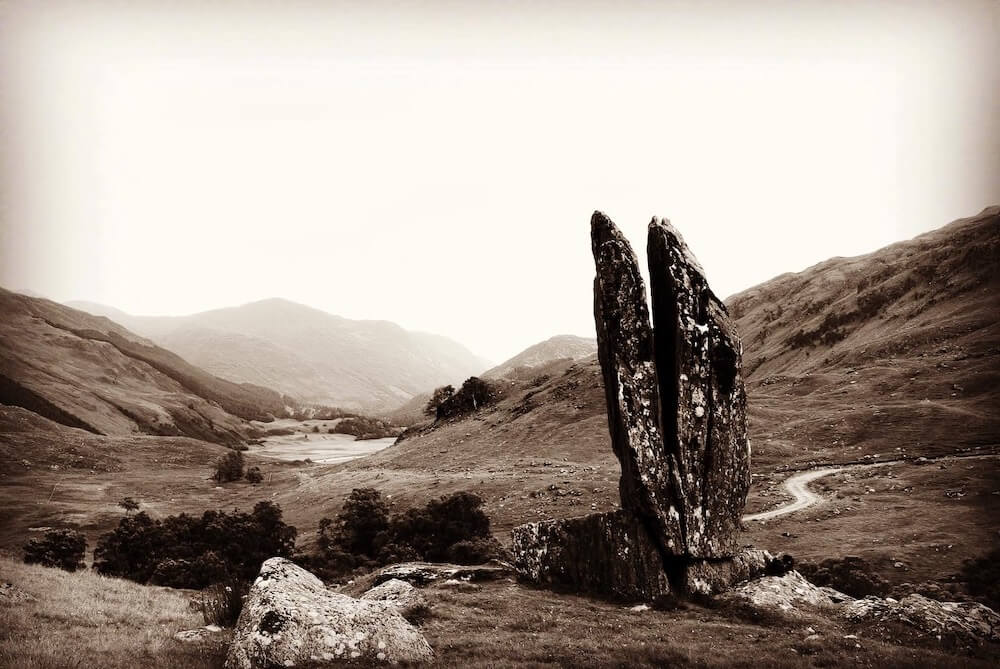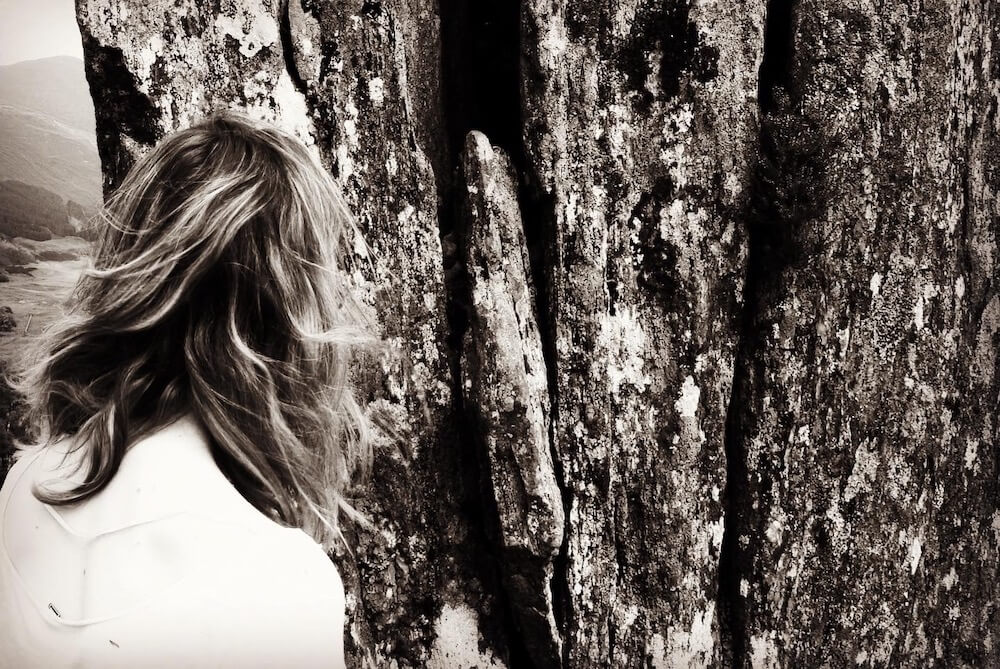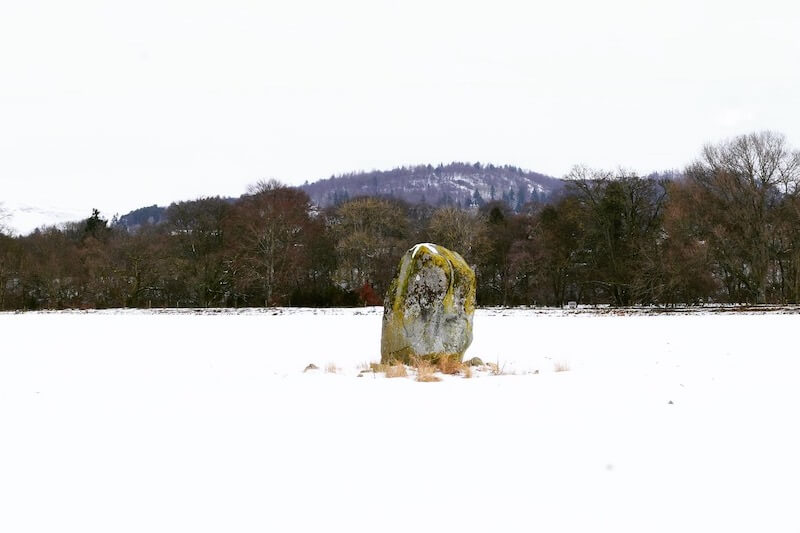Visit Scotland for English Language Learning
Today our English language school blog for creative minds and culture lovers shares with you the snow which has fallen, covering Perthshire.
We rejoice in new ways of seeing our familiar landscape.
This blog is written with a nod to John Berger‘s seminal ‘Ways of Seeing‘ – a textbook series of 7 essays on visual culture. (They are familiar to most students of art history).
It is Berger’s thesis that a creator’s intentions are impossible to know fully.
Standing Stones are also a mystery.
I’m referencing John Berger’s writing to re-look at a local landmark: the Crieff standing stone which has sort of been ‘reproduced’ by its layer of fresh snow.
Read this blog for a taste of learning English in Perthshire with our independent, culture-led English language school.
English learners – there’s a practice English exercise for you at the end.
“In Ways of Seeing, Berger explains how images have layers of deeper meaning beyond what they show on the surface: they can offer a valuable document of how their creator saw the world, but their underlying politics can also be obscured or mystified in order to uphold the powers that be.”
GradeSaver, “Ways of Seeing Summary”
A New Ways of Seeing
Snowfall changes our landscape startlingly and while it largely masks elements, it is also capable of revealing them with great effect.
“As you approach or leave Crieff along the A822 you can easily pass this stone by. Which would be a pity, as it’s quite a giant standing alone just above the slight ridge in the field. And in times gone by, not only were there other standing stones here as companions, but a cluster of other prehistoric pits, enclosures and linear markings were all around this very spot. Some of them are visible as faint crop-marks even today, but they remain unexcavated and we are left (presently) in the dark as to their nature.”

“This is serious megalith country!”
As a megalithic complex, this area [Strathearn] is outstanding.”
Northern Antiquarian website
Inform Yourself and Look Again
The snow becomes negative space.

Visit Scotland for Culture-Led English Learning
A little prior information can alter your first visit to this stone completely.
(This is why we teach English to ‘culture lovers.’ Your interest in what you are seeing is one way we keep you learning English during our English immersion holidays).
Did you know that Strathearn (our region in Perthshire) is peppered with monuments such as monoliths and stone circles, pits and cairns? All made throughout huge swathes of our ancient history.

A Global Phenomenon
How many of our ancestors were conceived here when menhirs were believed to cure infertility?

See for Yourself, When You Learn English in Perthshire!

One Last Tip
Menhir hold a presence that is hard to describe, for me it’s barely tangible but I suspect it’s also deeply magnificent if I could just better access it (and many seem too).
Further Information
Additional Notes on Using Our Blog:
These ‘conjunctive adverbs‘ are less frequently used in conversation, but extremely useful for written prose and presentations as they guide the reader comfortably from point to point. (They also give an air of authority and confidence).
Blue Noun English Language Challenge
We hope you’ve enjoyed our dip into the built environment of Strathearn, Perthshire.
We cover a broad range of topics in our language school blogs – some a lighthearted look at Scotland, others an in-depth look at art and culture. There’s something for everyone.
If you’ve liked this blog, we have another arty one for you:
Learn English With Art | Why Everyone is Beautiful
Your Blue Noun English Language Challenge is:
Use the comment section below to tell us about: a powerful place.
Write as much as you like, and if you would like us to check & correct your English, write CP (correct please) at the end. You might want to include structuring adverbs.
Live language learning!


